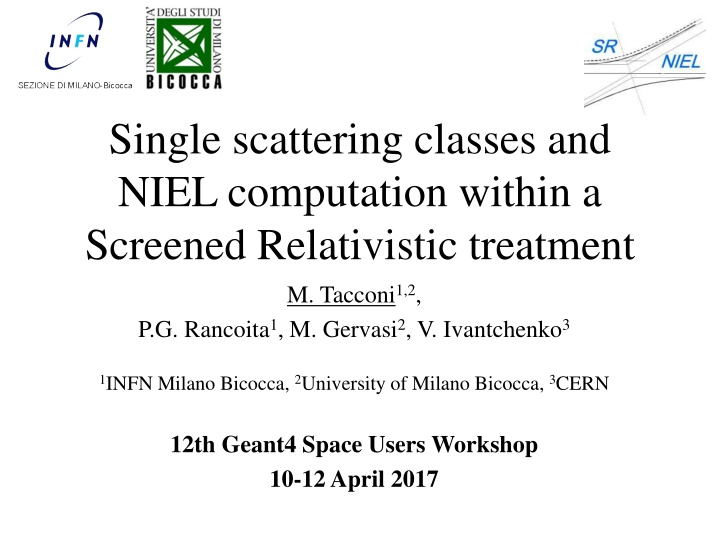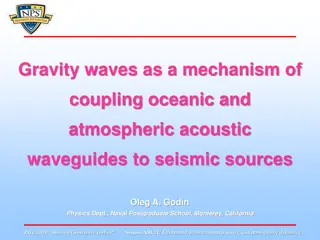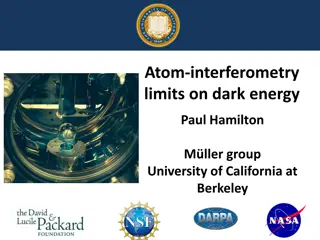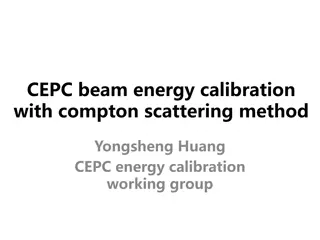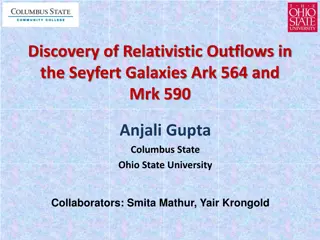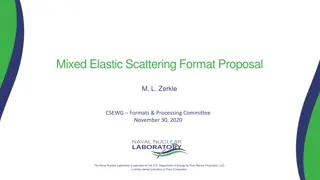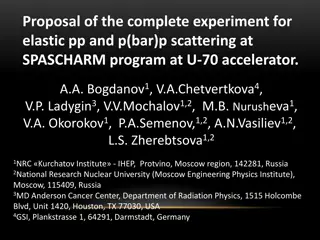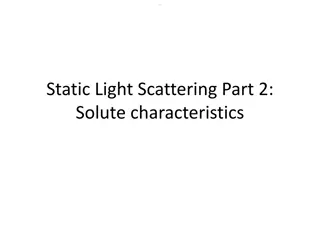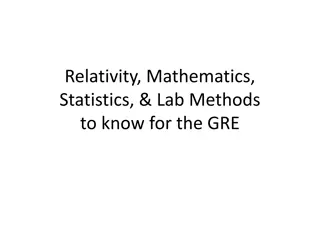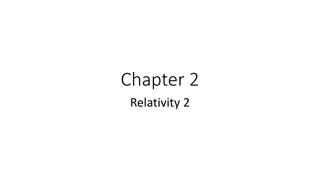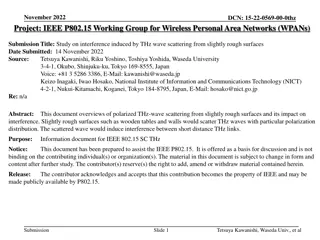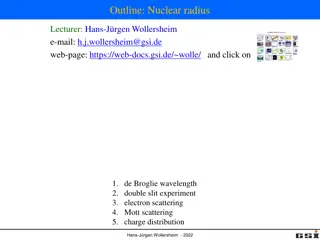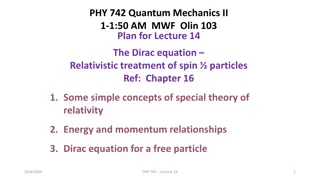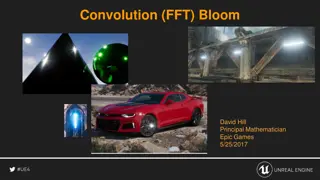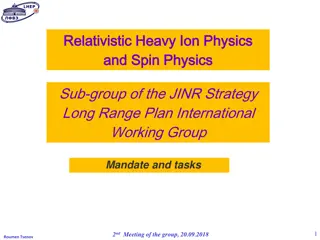Single Scattering Models and NIEL Computation within Screened Relativistic Treatment
In this study, the focus is on single scattering models and NIEL computation within a screened relativistic treatment. The article delves into the classes and calculations involved, discussing cross sections, proton/nucleus coulomb interactions, electron cross sections, and more. Various models and methods are explored, referencing works by renowned researchers in the field. The content presents a detailed overview of theoretical frameworks and practical applications within the realm of radiation interaction and detection.
Download Presentation

Please find below an Image/Link to download the presentation.
The content on the website is provided AS IS for your information and personal use only. It may not be sold, licensed, or shared on other websites without obtaining consent from the author.If you encounter any issues during the download, it is possible that the publisher has removed the file from their server.
You are allowed to download the files provided on this website for personal or commercial use, subject to the condition that they are used lawfully. All files are the property of their respective owners.
The content on the website is provided AS IS for your information and personal use only. It may not be sold, licensed, or shared on other websites without obtaining consent from the author.
E N D
Presentation Transcript
Single scattering classes and NIEL computation within a Screened Relativistic treatment M. Tacconi1,2, P.G. Rancoita1, M. Gervasi2, V. Ivantchenko3 1INFN Milano Bicocca, 2University of Milano Bicocca, 3CERN 12th Geant4 Space Users Workshop 10-12 April 2017
Outline Single Scattering Models Cross Sections and NIEL Calculation Results Conclusions 2
Single Scattering Models The scattering models are included in Geant4 and in 2 different physics classes: Since Geant4 version 9.4 (February 2011) - G4IonCoulumbScatteringModel - G4IonCoulumbCrossSection For Protons and Ions Coulomb scattering Since Geant4 version 9.5 (October 2012) - G4eSingleCoulumbScatteringModel - G4ScreeningMottCrossSection - G4MottCoefficients Electrons Coulomb scattering 3
Proton or nucleus Coulomb Cross Section on nuclei It is based on the relativistic extension to ion-ion screened Coulomb scattering of the Wentzel-Moliere treatment - already used for electron and muon scattering in Geant4 with Moliere screening parameter 2 d 2 ( ) 1 d Z Z e = 1 pc 2 2 2 Z Z 1 + 2 2 ( 1 cos ) s A = + . 1 13 . 3 76 1 2 A s 4 pa , TF un 1,m m M are the rest masses of the two particles is the invariant mass 2 2 , 1 2 and with screening lengths as in ICRU-49 (1993) 2 1 c = + 1 If Z1=1 for incident particle If Z1>1 2 pc 88534 . 0 Z 88534 . 0 Z a a m m = aTF= 0 aun 0 = 1 2 ( ) 3 / 1 2 + 23 . 1 23 . 2 Z M 2 , 1 References: C. Leroy and P.G. Rancoita (2016), Principles of Radiation Interaction in Matter and Detection - 4th Edition -, World Scientific (Singapore), Sects. 2.2-2.2.2 M.J. Boschini et al. "Nuclear and Non-Ionizing Energy-Loss for Coulomb Scattered Particles from Low Energy up to Relativistic Regime in Space Radiation Environment." Proc. of the 12 ICATPP, Como 7-8/10/2010), World Scientific (Singapore) 2011, 9-23 4
Electron Cross Section on nuclei ( ) 2 ( ) ( ) 1 cos d d = 2 ( ) R F q + 2 2 ( 1 cos ) d d A + + . ( . .) Mott Scrr NFF Ruth c m s Molier s Screening Coefficient: Rutherford in the center of mass: Nuclear Form Factor 2 d 2 ( ) 1 d Ze 2 2 = Z 1 ( )2 = + . 1 13 . 3 76 A 2 2 c 1 cos s 4 pa ( . ) Ruth c cm TF 88534 . 0 Z a aTF= 0 3 / 1 Ratio of Mott cross section over Rutherford ( ) d / 2 j Mott Cross Section fit: 4 j = 1 ( j cos ) R a d R Mott ( ) d = 0 1 k 6 d k bj,k are the fitting parameters = ( ) a b Ruth , j k j = 1 References: C. Leroy and P.G. Rancoita (2016), Principles of Radiation Interaction in Matter and Detection - 4th Edition -, World Scientific (Singapore), Sects. 2.4-2.4.3 M.J. Boschini et al."Nuclear and Non-Ionizing Energy-Loss of Electrons with low and Relativistic Energies in Materials and Space Environment" Proc. Of the 13th ICATPP (13th ICATPP, Como 3-7/10/2011). M.J. Boschini et al An Expression for the Mott cross section of electrons and positrons on nuclei with Z up to 118 Radiat. Phys. Chem. (2013), http://dx.doi.org/10.1016/j.radphyschem.2013.04.020 5
Displacement Damage and NIEL Incoming Particle Frenkel-pairs: E dis T FP 5 . 2 d Displacement threshold energy Energy density which goes into displacement [MeV/cm3]: E max min E = ( ) ( ) E NIEL E Minimum incoming energy to generate displacement E dE dis Non-Ionizing Energy Loss: T ( , ) d T E max = ( ) ( ) NIEL E N T L T dT (E): T: L(T): Spectral Fluence [cm-2] Number of Target Atoms [cm-3] Target kinetic Energy Lindhard s partition function dT Td Nuclear Stopping Power: T ( , ) dE d T E max = ( ) E N T dT ( , ) d T E differential cross section dx dT dT 6 0
Code for NIEL Calculation SR-NIEL: Screened Relativistic (SR) Treatment of the Displacement Damage On line Calculators available at: www.sr-niel.org This is a C++ analytical code and has been developed to calculate the Non Ionizing Energy Loss of electrons, protons, ions and neutrons with the possibility to change the displacement threshold energy Also included: - Nuclear Stopping power calculator - Electronic stopping power calculator - Energetic nuclear recoil calculator 7
Geant4 Implementation (test58) Using Geant4 transportation code the scattering of the incoming particle with the atoms of the materials is simulated with single scattering models Projectile Particle What is calculated: - Scattering angle and new direction - Energy transferred to the target atom of the material. Displaced Atom If this energy is grater then Td a secondary particle is generated In an External Example (test58): - The secondaries are killed - The kinetic energies of secondary particle T are multiplied by L(T) and summed up NIEL - The energies T transfered to target atoms are summed up Nuclear Stopping Power 8
Results and Comparison Testem0 - Total Cross Section - - - Differential Cross Nuclear Stopping Power NIEL test58 9
Total Cross Section Calulated with Testem0 and method ComputeCrossSectionPerAtom Average difference is less than 0.5% 10
Protons Differential Cross Section - - - - test58 with only G4IonCoulumbScatteringModel (no other physic active) 107 Protons (E=10 MeV) on a slice of Silicon 0.1 nm thick* 3.8x105 interactions were produced Y( ): Distribution of the deflection angle outside the target particles deflected between and +d Incident particles Thickness of target Number density of the taget the solid angle between and +d 11 *The thickness was kept as thin as possible to reduce multiple scattering effects
Electrons Differential Cross Section - - - - test58 with only G4eSingleScatteringModel (no other physic active) 107 Electrons (E=10 MeV) on a slice of Silicon 10 nm thick* 2.1x105 interactions were produced Y( ): Distribution of the deflection angle outside the target particles deflected between and +d Incident particles Thickness of target Number density of the taget the solid angle between and +d 12 *The thickness was kept as thin as possible to reduce multiple scattering effects
Electrons Differential Cross Section command in macro file: /process/em/setNuclearFormFactor formfactorname None Exponential Gaussian Flat Available in Geant4 version 10.3 The experimental data are from: G. C. Li, M. R. Yearian, and I. Sick, Phys. Rev. C 9, 1861 (1974) 13
Nuclear Stopping Power Calulated with test58 Electrons in Si - Nuclear Stopping Power 14
NIEL Calulated with test58 15
Conclusions - Wentzel and Mott cross sections are well implemented in Single Scattering Models. - NIEL and Stopping Power calculation with test58 and Single Scattering models gives result in good agreement with analytical one. 16
